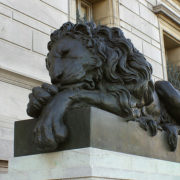Corcoran Fiasco: Troublesome Plans for the Capitol’s Oldest Art Museum
Ruth Osborne

Save the Corcoran website.
It seems there will be no end to the ravaging of great collections by museum boards without any other hope in sight. Just as the financial distress with the Barnes yanked this famous collection from its roots in Merion, PA, to a pretentiously zen warehouse in Philadelphia in 2012, so too does impending financial doom threaten to tear apart Washington’s Corcoran Gallery of Art and College of Art + Design.
Economic distress began in 2012 when the Corcoran issued a statement reporting their intentions to “implement plans to ensure its long-term stability and attain a new level of vitality and excellence.” Without the aid of federal funding, their need for $100 million in renovation and maintenance costs had presented them with an insurmountable challenge. Responding to this, they announced the possibility of relocation:
“So, to move toward a robust and successful future for the Corcoran, we are evaluating all of our options for the building. Just as the Corcoran moved in 1897 to accommodate its growing collection, one of the clear options now is to consider relocating to a purpose-built, technologically advanced facility that is cost-effective to maintain.”[1]
As Lee Rosenbaum (CultureGrrl) reported, the main issue at hand is the imminent breaking up of the collection. The Corcoran had already been through several series of major deaccessions since 1979, which were renewed in recent years. There were even suggestions that some items had been sold against no-sale restrictions from their benefactors, though this was ultimately proven a false accusation. The dismembering of such a collection, or the disjoining of a collection from its historic setting, is extremely unsettling for ArtWatch.
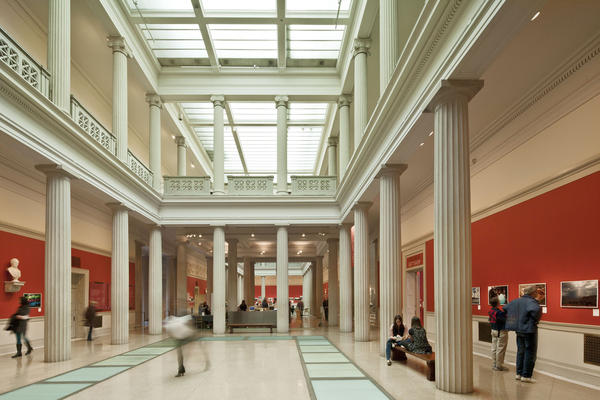
Inside the Corcoran Gallery’s 1897 building.
Not only does it bring to mind collections that have suffered damages in forced travel from their long-standing home. It sets out the possibility of a precious collection being forever divorced from its original donors’ wishes and set forth on a new trajectory of blockbuster exhibitions, when the public has always had the opportunity to visit the collection and to experience it within its magnificent 100+ year-old home setting. What is to become of these works that will now be removed from the walls of their Beaux-Arts dwelling, just steps from the White House? Will their history within the Corcoran, and the historic moment of American collecting it represents, simply be dissolved?
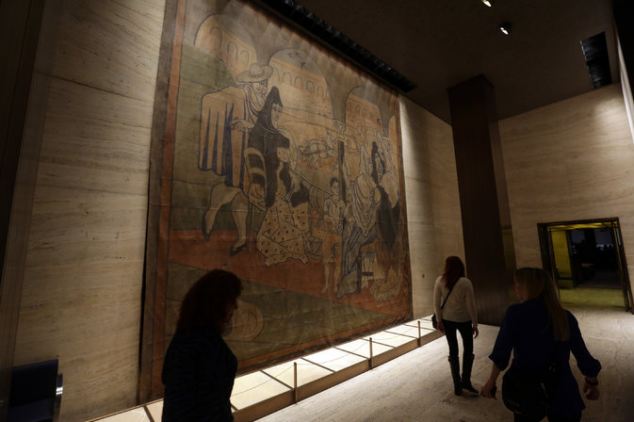
Picasso’s Le Tricorne at the Seagram Building.
Meanwhile, just a few weeks ago it was also reported that Picasso’s “Le Tricorne” mural was in danger of being removed, at great risk to its fragile condition, from the landmarked Seagram Building in New York City. All this simply because the building’s current owner real-estate developer Aby Rosen, thinks this Picasso is a “rag.” Even more than with the Corcoran’s collection, one must consider the holistic visual experience that will no longer be experienced by future generations. The assault on historically housed works of art is reaching epidemic proportions. Visiting the Barnes collection at its new home on the Ben Franklin Parkway in Philadelphia, there is now a clear “dis-connect” between the works and their collector’s original arrangement, and the new replica building itself, with its interrupting spaces of blank walls and glassed-in gardens.
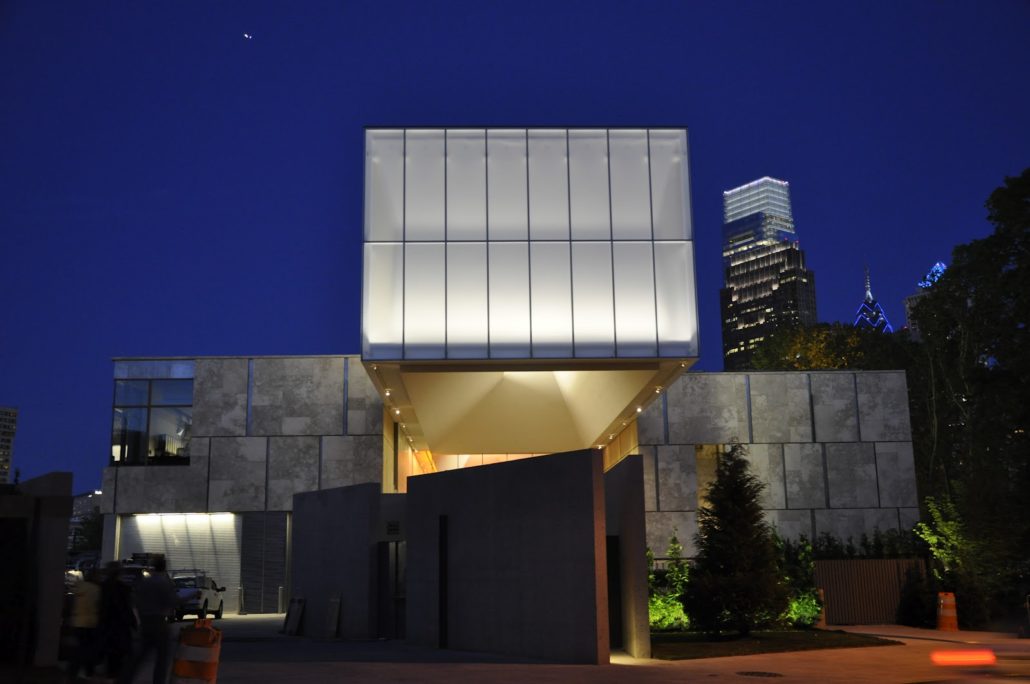
Barnes Foundation exterior 2012.
After the Corcoran’s initial press release in June of 2012, alternatives were suggested so that the collection need not relocate. The Gallery’s former head of public relations and marketing, Roberta Faul-Zeitler, recommended that either the College housed at the Corcoran (since 1890) should move to a new building, or that the collection be affiliated with another premier National Museum. Among those suggested as new affiliates for the Corcoran collection were the National Gallery of Art, National Portrait Gallery, and Smithsonian American Art Museum, all in D.C.[2] As of recent news, it turns out the works will succumb to the massive appetite of the National Gallery of Art. [3] The collection will now be brought into the centralized system of museums along the Mall as if there were not something to be treasured in the fact that the Corcoran is in fact Washington, D.C.’s oldest private art museum.
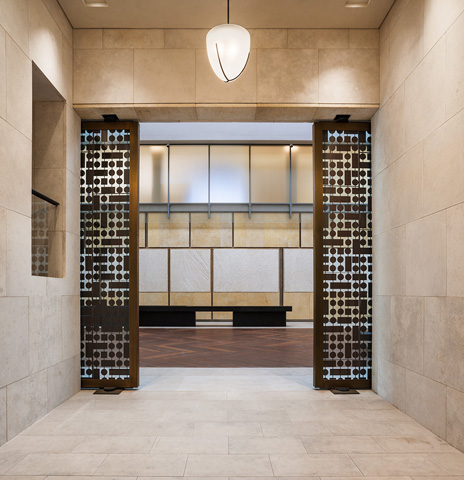
Hallway at the new Barnes Foundation building, 2012.
Meanwhile, the Corcoran College of Art + Design is to be absorbed within George Washington University. As discussions over who would “take” the College swung back-and-forth between the University of Maryland and GWU over the past few years, it would be remiss to say that this portion of the Corcoran’s closure has been without its battling giants.[4] The motivation for the Corcoran to select GWU may have been unclear at first, but in the end has turned out to be founded on just what one might expect: “money, risk and control.” The Washington Post further reports that “The Corcoran also will seek to be released from its founding purpose as a gallery — chartered by financier and philanthropist William Wilson Corcoran in 1869 and now to be redefined in 2014.”[5] The flip-flopping negotiations over the past 3 years surely must not generate trust from the 550 students being tossed about in the middle of it all.
A student organization, “Save the Corcoran,” has sprung up around this fiasco:
“Proposing a more open and honest dialogue about the institution’s future, the group is rooted in a sincere effort to collaborate with Corcoran leadership on a solution that will address the gallery’s needs while maintaining its historic home and identity.”
In a letter on their website, the donors, artists, faculty, students, and alumni state that: “we as a community first stood together, united in our concern, confusion and outrage over the proposed sale of the historic Ernest Flagg building that houses our beloved Corcoran.” Their last effort in this hapless struggle was to prevent the sale of the landmark Corcoran building on 17th St. with a petition in 2012. Signers have protested against what they refer to as the “suicidal sale” of one of the Capitol’s “most valuable historic and cultural assets.”[6]
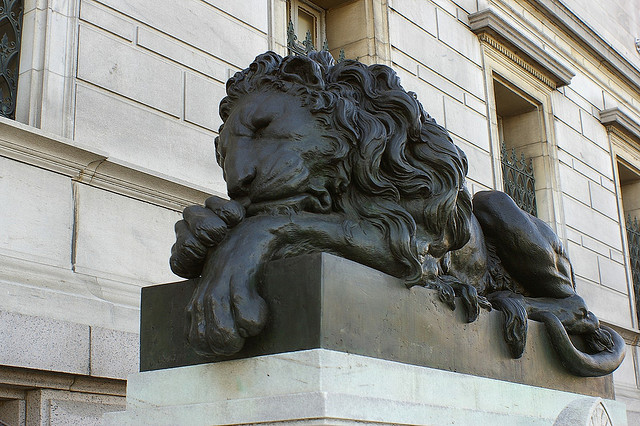
2014-03-07 – Corcoran Beaux-Arts lion
This imminent threat to the Corcoran recalls what happened to the Barnes Collection in Merion, PA when the Board encountered financial troubles. It is also difficult to ignore the permanent damage to works of art caused by relocation, even by the most capable and knowledgeable hands. The Burrell Collection in Scotland is also facing this issue once the building’s four-year renovation begins and its pieces are shuttled around the world to raise funds for its costly venture. The selling and abuse of heritage collections has, unfortunately, seemed inescapable in recent years. Lee Rosenbaum has most recently brought to light a question that should be at the forefront of everyone’s mind: now that the Corcoran will cease to build their collection, where will the proceeds (in the tens of millions) go from sales of recent deaccessions?[7] Where is the master scheme behind the haphazard dissemination and dissolution of the Corcoran? How many more venerable institutions will now face dismemberment and asset-stripping in the present spell of financial austerity?
[1] Fred Bollerer (Director and President) and Harry Hopper (Chairman, Board of Trustees), “Statement from the Corcoran Gallery of Art and College of Art + Design,” 6 June 2012. Corcoran Gallery of Art – Corcoran College of Art + Design. http://legacy.corcoran.edu/sites/default/files/press-releases/CorcoranStatement06042012.pdf (last accessed 21 February 2014).
[2] Lee Rosenbaum, “Corcoran Uproar: Desperate Gamble to Rescue a Foundering D.C. Museum UPDATED,” 6 June 2012, CultureGrrl. http://www.artsjournal.com/culturegrrl/2012/06/corcoran_uproar_desperate_gamb.html (last accessed 21 February 2014).
[3] David A. Smith, “Arts: Washington D.C. lose great art museum,” 6 March 2014. Waco Tribune. http://www.wacotrib.com/entertainment/accesswaco/david_a_smith/arts-washington-d-c-may-lose-great-art-museum/article_aadf6a96-572a-5a2d-885d-8da632e3206a.html (last accessed 6 March 2014).
[4] Nick Anderson, “George Washington University plans for merger with Corcoran College,” 21 February 2014. The Washington Post. http://www.washingtonpost.com/local/education/gwu-plans-for-corcoran-college-merger/2014/02/21/9b9e0054-9b00-11e3-975d-107dfef7b668_story.html (last accessed 6 March 2014).
[5] David Montgomery, “When Corcoran’s partnership didn’t work out as hoped, thoughts turned to a takeover,” 1 March 2014. Washington Post.
http://www.washingtonpost.com/entertainment/museums/when-corcorans-partnership-didnt-work-out-as-hoped-thoughts-turned-to-a-takeover/2014/03/01/bcc130ca-9f11-11e3-b8d8-94577ff66b28_story.html (last accessed 6 March 2014).
[6] Petition – “Vote NO on the sale of the Corcoran building,” Change.org http://www.change.org/petitions/the-corcoran-gallery-of-art-board-of-trustees-vote-no-on-the-sale-of-the-corcoran-building (last accessed 6 March 2014).
[7] Lee Rosenbaum, “Corcoran Dissolution: Whither the Art-Sale Proceeds?” 4 March 2014. CultureGrrl. http://www.artsjournal.com/culturegrrl/2014/03/corcoran-dissolution-whither-the-art-sale-proceeds.html (last accessed 6 March 2014).

